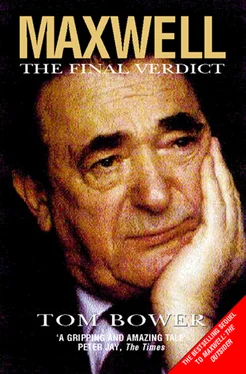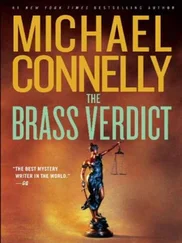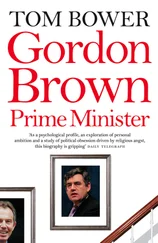His targets were two fund managers of pension fund shares. In October 1990, he asked the managers of Capel Cure Myers and Invesco MIM for the temporary return of shares owned by the pension funds for stock lending. On 8 October, Capel Cure, on Kevin’s instructions, sent shares worth £40 million for stock lending to Lehmans. Capel Cure’s covering letter explicitly informed the bank that the shares were owned by the Mirror Group Pension Scheme. The reason for their action, some suggest, was that an assistant director at Capel Cure appreciated that the pension fund shares were to be used as collateral for a loan rather than for stock lending and sought to protect his position.
The following day, 9 October 1990, Kevin and Cook, acting as BIM directors, instructed Invesco to send its pension fund portfolio worth £30 million to Lehmans. The letter, signed by Kevin on behalf of the Mirror Group Pension Scheme, assured Invesco that the shares would be used for normal stock lending and returned ‘within 30 days’. Lawrence Guest, a Mirror Group director and one of the fund’s trustees, was not told about the ‘stock lending’. He would only discover in November 1991. Initially, there was no reason for the other fund managers to suspect that Kevin’s instruction was not straightforward, but the arrangement did disturb Tim Daily, Invesco’s expert in stock lending. Daily, twenty-seven years old, was an ambitious, working-class trader born in Watford with just six O levels who unashamedly wanted ‘to taste the good things in life’. Hired in April 1990 to expand Invesco’s stock-lending business, he had recently been appointed the chairman of the International Stock Lending Association, the industry’s spokesman in dealing with both the media and the Bank of England. Among his targets for Invesco’s new stock-lending business were the Maxwell pension funds.
The news that Maxwell was intending to use a rival for stock lending was passed to Daily that same day, 9 October, in a panic telephone call from Peter Smith, his subordinate. Daily, in Naples, Florida attending a stock-lending conference, was chastened by the report. ‘It all sounds a little bit fishy,’ Smith told Daily, ‘and not quite as cut and dry as it seems.’ On hearing the news, he added, he had telephoned a friend at Lehmans and had been told that the portfolio was to be used not for stock lending but ‘purely as collateral for a loan’. Smith added that, to his surprise, Trachtenberg had also telephoned asking him not to speak to Lehmans. Daily decided to approach Mark Haas, the bearded and ambitious Lehmans securities executive responsible for negotiating the transaction with Kevin and Trachtenberg, who was also attending the conference in Florida.
Minutes later, Daily found Haas watching a game of pool. ‘Are you taking away our client for stock lending?’
‘No,’ replied Haas. ‘We’re doing a Treasury repo. Not stock lending. Maxwell is having trouble raising cash’ and was using pension fund assets. Haas knew that MCC, under pressure to repay debts, had asked Lehmans for a $15 million loan for one month. His superiors, after reading MCC’s accounts, had vetoed the idea out of fear of Maxwell’s ‘potential for manipulation [of] profits’ and because MCC’s accounts revealed assets of minus $2.2 billion because of the debts. Moreover, at Lehmans, the very nature of the transaction – whereby shares ‘borrowed’ by Kevin were exchanged for the final total of $83.9 million in cash and paid to Maxwell’s private company – enabled the bankers to understand precisely the unusual use that was being made of pension fund assets.
Haas did not reveal those details that day in Florida, but enough had been said to prompt Daily’s comment: ‘I don’t like the sound of it. It’s a bit dodgy.’
‘We haven’t had this conversation,’ replied Haas. ‘I know my half. You know your half. Together we know too much.’ Haas would deny this version of the conversation.
Daily ignored this advice and reported the conversation to Bob Southgate, his superior in London. Southgate’s reaction was, ‘It’s all very sensitive,’ referring not to Maxwell’s financial predicament, but to the fact that Maxwell owned a 20 per cent stake in Invesco MIM and was a friend of the fund’s chairman, Lord Stevens (moreover its president was Lord Rippon, a director of MCC). After a number of huddled conversations, Invesco’s managers agreed to accept Maxwell’s assurances.
In the event, the pension fund shares were exchanged with Lehmans for Treasury bills which were then cashed. The money was paid not to the pension funds but to LBI and then to Headington Hill Investments, Maxwell’s private company. The bankers’ apparent lack of concern that Maxwell might have been using pension fund shares to raise cash was reflected in their confused records. Haas was dealing with LBI, Maxwell’s private investment company, which allegedly was representing BIM, the pension fund managers. Yet in Lehmans’ records the depositor of the shares was recorded as ‘LBIIM’, a different entity, suggesting unusual carelessness by the bank.
Trevor Cook, meanwhile, was not only ignorant of the deal negotiated by Trachtenberg and Kevin with Lehmans, but when on 16 October Daily arrived at a Maxwell office in Shoe Lane to meet him and Trachtenberg, he remained unaware of the Invesco trader’s conversation with Haas. Daily had invited himself to present his expertise in stock lending. Towards the end of the meeting, Trachtenberg explained to Daily that LBI was paying 1.75 per cent for stock-lending fees. Although Daily realized that the figure was higher than normal, he said nothing. Cook also stayed silent: he knew that LBI’s fees might be high but he ‘had no point of reference’. Any doubts were offset by Donoughue’s presence within LBI. ‘I trusted Donoughue and he knew that we were stock lending the pension fund assets. I assumed it was all right,’ recalled Cook.
‘That was a load of rubbish,’ Daily said to his colleagues as they descended in the lift.
‘Don’t say anything here,’ replied one of the other occupants. ‘The lift’s probably bugged.’
Cramped into a small office on their return, Daily told his superiors, ‘It’s all wrong.’ The response was equivocal. To refuse to comply with their client’s request was out of the question, not least because Maxwell was a shareholder and a friend of Lord Stevens. So, on 19 October, after several telephone calls asking, ‘Is it all ready?’, Trachtenberg arrived in Invesco’s entrance hall and personally took the share certificates from Daily, signing a receipt. On one issue Trachtenberg was insistent: the transfer was temporary. The certificates were to be returned in thirty days.
To regularize the arrangement, Kevin and Robert Maxwell signed a contract. Kevin (on behalf of BIM) and his father (on behalf of the Robert Maxwell Group) agreed that RMG could borrow BIM’s stock. Although dated 1 October 1990, it appears to have been formulated at the end of 1990 to cover the Capel Cure and Invesco transactions. It allowed both Kevin and Trachtenberg to reinforce the claim they were making to Cook that pension fund assets were involved in stock lending. But Cook, although he was BIM’s manager, was not suspicious. After he had received a letter from Lehmans stating that the shares and Treasury bills ‘were held for your account’, he assumed that the pension funds were covered by genuine collateral of between 125 and 150 per cent. But he never actually saw any share certificates, nor did he ask to see anything. ‘I just got lists and letters,’ Cook later reflected ruefully, ‘from Trachtenberg on behalf of LBI.’ Everything, he believed, was held by the banks. He did not ask to see the Treasury bills nor did he realize that they had been cashed. ‘I should have checked the share certificates but I didn’t suspect anything. I was fooled.’
Читать дальше












